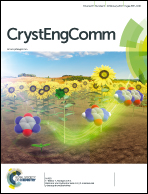Zinc diphosphide nanowires: bismuth nanocrystal-seeded growth and their use as high-capacity lithium ion battery anodes†
Abstract
For the first time, binary lithium-reactive zinc diphosphide (ZnP2) nanowires were synthesized via bismuth-seed growth at 400 °C via a solvothermal route. The synthesized ZnP2 nanowires are single crystals with diameters ranging from 10 to 50 nm and have a precise orthorhombic structure without impurity phases. From SEM and HRTEM images, the lengths of the nanowires over several micrometers could be observed. The effect of reaction parameters, including temperature and seed to precursor ratio, on the quality of reaction products has been systematically investigated. We used ZnP2 nanowires as an anode material for lithium batteries since ZnP2 has a much higher theoretical capacity of 1581 mA h g−1 than that of commercial graphite (372 mA h g−1). The capacity of the first discharge cycle was 1415 mA h g−1 at 0.3C (1C = 1581 mA h g−1) with high Coulombic efficiency up to 89%. The discharge capacity was maintained at 1066 mA h g−1 after 500 cycles, showing good capacity retention and long lifespan. With these merits and excellent electrochemical performance, ZnP2 nanowires clearly are a promising anode material for lithium ion batteries.



 Please wait while we load your content...
Please wait while we load your content...